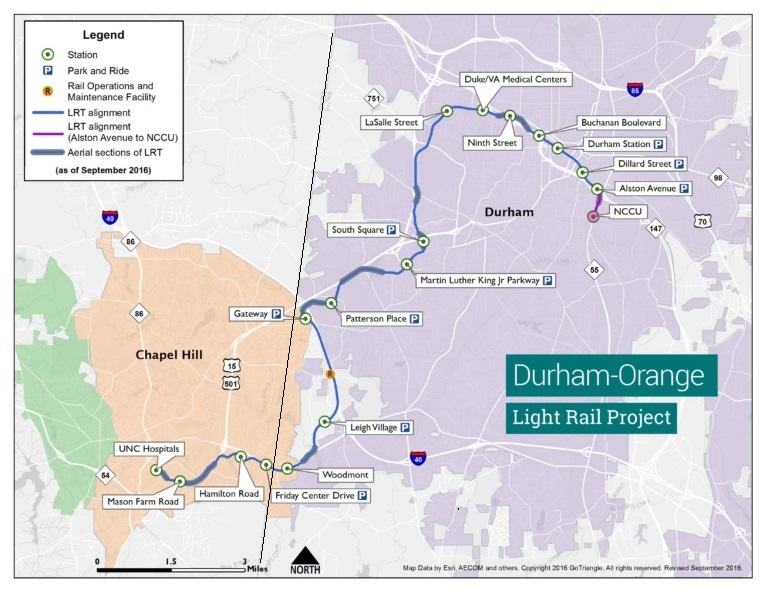It’s been a year since the County Commissioners voted to proceed with an expensive commitment to fund the Durham Orange Light Rail Transit, (DOLRT), commonly referred to as the light rail project.
We sat down with Orange County Commissioner Earl McKee to ask him for his assessment of where we are and recorded it in a short video. See video at this link.
Here is the short version of what’s happening with the light rail project here. The key points are:
- The project is in the engineering phase where over $100 million of local monies has been spent designing the light rail from UNC to Durham. At the same time, the project is being evaluated for state and federal funding.
- Most of the bus, bus rapid transit and other projects for the Triangle have been put on a back burner so that DOLRT could garner all the funds available from the State. That means no reverse circulator for Hillsborough, NC 54 service, and other services will be delayed or funded through property taxes (instead of the transit tax).
- DOT has indicated that the project will qualify for at most 7.5% funding from the state. That means an additional $60 million will need to come from Orange and Durham. If you recall, state funding caps had already been reduced from 25% to 10%,
- Commuter rail service that could have connected Hillsborough through Durham to RTP, RDU and Raleigh, has been postponed indefinitely. Transit planners are exploring the option of adding an additional county and town property tax increase to fund this important service.
- Operating costs: Durham has agreed to pay 80 percent to 81 percent of the operations and maintenance costs – about $26.2 million a year by 2045 – with Orange County picking up the rest, or roughly $6.2 million a year.
- In its latest budget, Orange County has reduced its sales tax growth projections by 30% suggesting that the county will not have the projected revenue to fund the project if it goes forward.
- Federal funding (50% cap) is a year away. Right now it could happen, but there are many variables that could change in the next 12 months.

